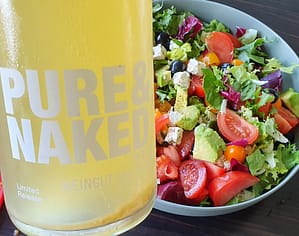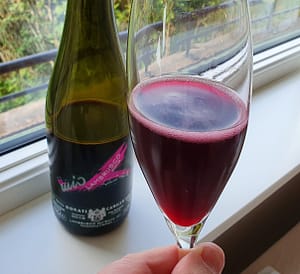This Franken wine is maybe perfect to exemplify the natural wine movement. Not only are the words Pure & Naked that make up the name among the most dominating when describing these wines. It’s also a pét-nat, a style that has come to prominence in this era, and it’s un-filtered, murky as a morning mist.
Ludwig and Sandra Knoll can be found in Würzburg, on the river Main, where they practise bidynamic vituculture. Among their most important vineyards are Würzburger Stein, and maybe even more famous: Stettener Stein, hence the name of the company.
The wine is made from sauvignon blanc and cabernet blanc (a Swiss hybrid) in equal parts. It was cold-macerated 6 days, un-filtered and un-sulphured.

Pure & Naked 2019 (Weing. am Stein – Ludwig Knoll)
Cloudy yellow-greenish, lightly bubbly. Aroma of pineapple, going towards lime and grapefruit, a flowery component too. Juicy, lovely acidity, nice grapefruity aftertaste. Pure fun!
Price: Medium
Food: Fish, shellfish, sushi, salads, some strawberries, on its own…
Leave a Comment


